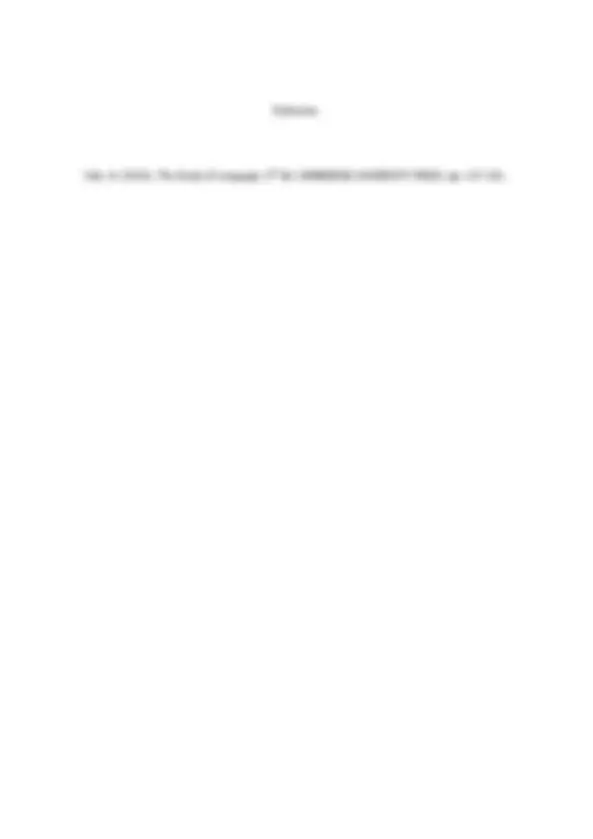



Study with the several resources on Docsity

Earn points by helping other students or get them with a premium plan


Prepare for your exams
Study with the several resources on Docsity

Earn points to download
Earn points by helping other students or get them with a premium plan
Community
Ask the community for help and clear up your study doubts
Discover the best universities in your country according to Docsity users
Free resources
Download our free guides on studying techniques, anxiety management strategies, and thesis advice from Docsity tutors
Speech act theory is a pragmatics area that studies how words are used to perform actions beyond stating facts. Direct speech acts have a direct relation between function and structure, while indirect speech acts have an indirect relation. Indirect speech acts are more polite and commonly used in conversations. Yule (2010) explains these concepts in detail.
Typology: Essays (university)
1 / 3

This page cannot be seen from the preview
Don't miss anything!


THEORIES OF LANGUAGE AND LANGUAGE ACQUISITION 2ND Semester, AY 2020- 2021 Unit: _____Lesson:_____ Score:______________ Name: COLEEN A. CADIGAL Year and Section: AB ELS 1 A Date: April 8, 2021 Task Title/s: A Theory I Like This/These task/s was/were : easy just right challenging Speech Act Speech act theory is an area of study of pragmatics that studies and focuses on how the utterance is delivered and how words are utilized to convey the message that does not just limit to speaking or stating a statement that but rather performing the said speech act that executes certain actions. Speech acts involve actual interactions that require sufficient knowledge about the language and also on how to properly execute and perform such actions. A speech act is used to define actions like “greeting,” “requesting,” “complementing,” “commanding,” “questioning” or “informing.” Examples of speech act that can be usually heard in a conversation or what we hear daily are: “Have a nice and wonderful day ahead!”, “I would love to order a glass of water, please?”, “You’re so beautiful!”, “Shut the front door when you leave!”, “Aren’t you running late for work?” and “I’ll bring the pizza to your house.” This said theory of speech act intends to show that even though phrases and words are used to transmit and deliver the message, speakers carry out and perform more actions with words and phrases rather than just transmitting messages.
The difference between direct speech to indirect speech is that direct speech has a direct relation between a function (question, command, statement) and a structure (interrogative, imperative, declarative,) or when the speaker is implying specifically the
same as the specific meaning of the intended message. For example, an interrogative structure with the function of a question like “Did you wash the dishes?” or “ Did Coleen write this?” can be considered as a direct speech act. Meanwhile, the indirect speech act is when there is an indirect relation between a function and a structure, or when a speaker is implying a different thing from the literal or specific meaning of what is intended to say. Instead of a structure with the function of a question, it is with the function in the form of request. Like for example, “ Do you think you can wash the dishes?” an interrogative sentence type in a form of request. Indirect speech is commonly used to address or when talking to someone since it is more considered polite in a way that you are requesting something rather than questioning or dictating it like what direct speech act is for.